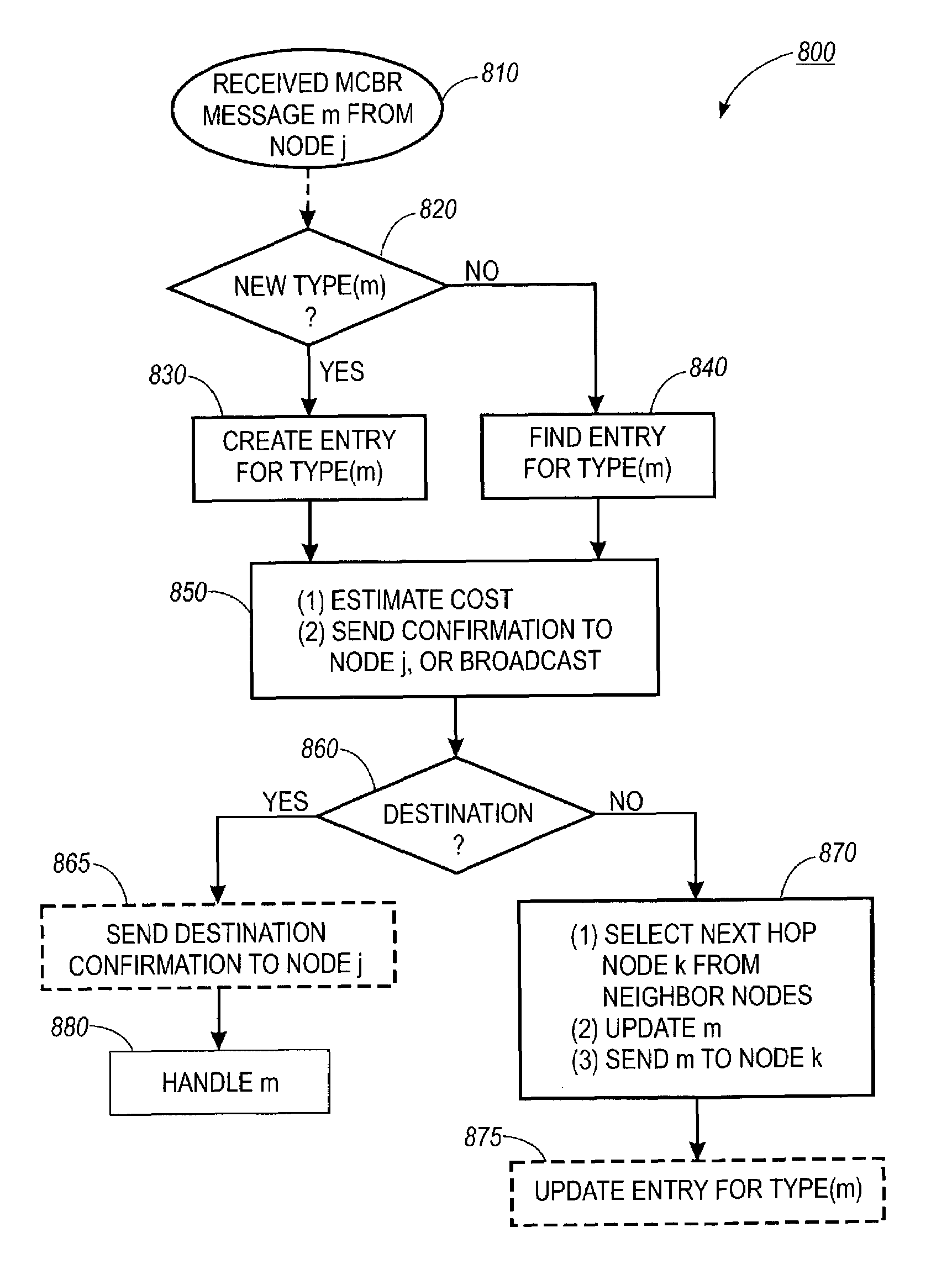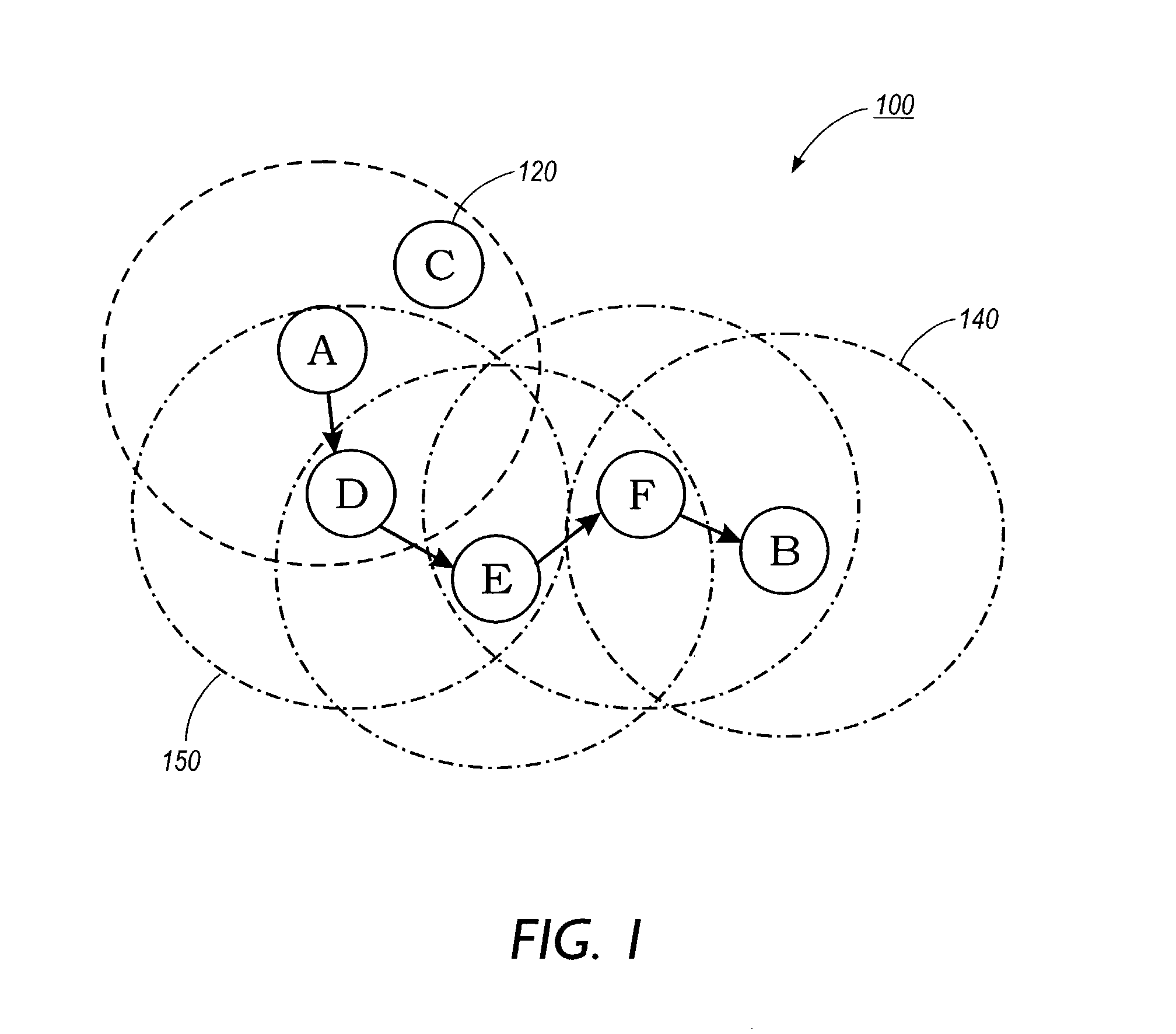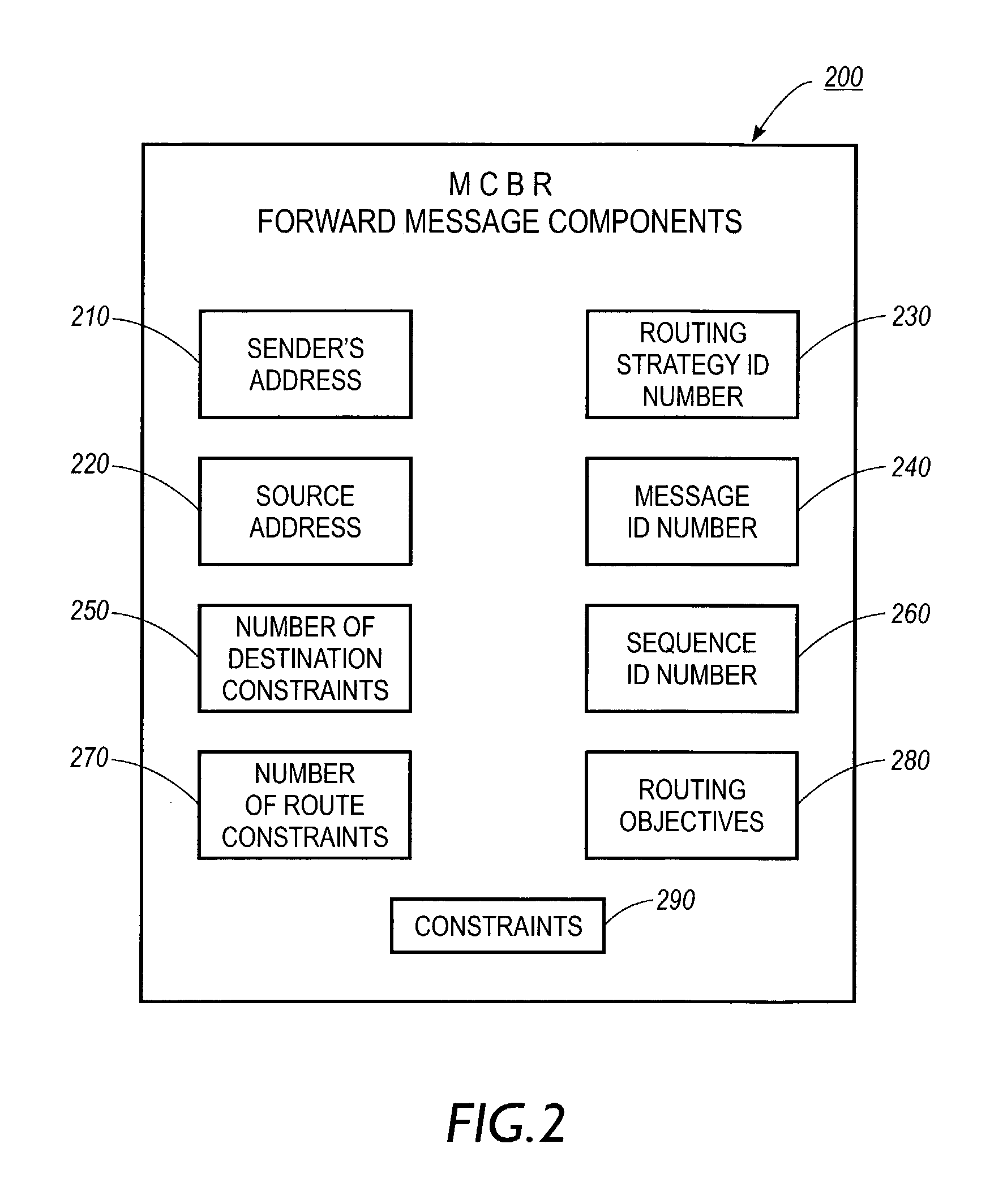Protocol specification for message-initiated constraint-based routing
- Summary
- Abstract
- Description
- Claims
- Application Information
AI Technical Summary
Problems solved by technology
Method used
Image
Examples
Example
[0024]Message-initiated Constraint-based Routing (MCBR) as used herein describes routing mechanisms with constraint-based destinations and objectives specified in messages. In MCBR, each node in the network has a list of attributes, whose types are predefined and known globally. Attributes can be anything from geographical locations to network bandwidths, from sensor values to internal clocks. The values of attributes can be constant, such as a node identifier or a unit cost, or can change from time to time. For example, a mobile node may change its locations; a stationary node can still obtain different sensor readings although its environment changes. A routing destination is explicitly represented by a set of constraints on attributes. This destination specification is more general than attribute-based specification, since constraints may describe any relationship or characteristic. Furthermore, in addition to destinations, local route constraints, if any, are explicitly specifie...
PUM
 Login to view more
Login to view more Abstract
Description
Claims
Application Information
 Login to view more
Login to view more - R&D Engineer
- R&D Manager
- IP Professional
- Industry Leading Data Capabilities
- Powerful AI technology
- Patent DNA Extraction
Browse by: Latest US Patents, China's latest patents, Technical Efficacy Thesaurus, Application Domain, Technology Topic.
© 2024 PatSnap. All rights reserved.Legal|Privacy policy|Modern Slavery Act Transparency Statement|Sitemap



